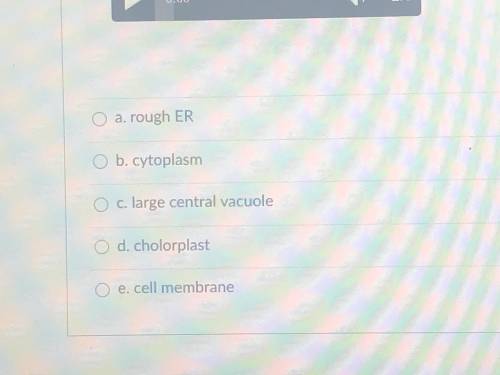
I NEED HELP ASAP A biologist examining an organelle with a electron microscope, which is strong enough to see the interior of a cell. She makes note that she is looking at a eukaryotic cell. She observes a continuous network on membranes, that look like flat, stacked, sac-like structures. The tubed membranes are in the vicinity of the nucleus and have small, round structures on the outside of the membranes. What cell organelle is being observed?


Answers: 2
Another question on Biology


Biology, 22.06.2019 11:00
When a cell is in a solution that has the same concentration of water and solutes as its cytoplasm, the cell is said to be in a(n) solution. a. isotonic b. hypotonic c. hypertonic b. facilitated
Answers: 3

Biology, 22.06.2019 17:30
In the first stage of the nuclear fuel cycle the spent fuel must be transported, processed, and disposed of properly. true or false
Answers: 2

Biology, 22.06.2019 20:30
Our planet has experienced five major extinctions in the four billion year history of life. the first, 450 million years ago, occurred shortly after the evolution of the first land-based plants and 100 million years after the cambrian explosion. the second extinction occurred 350 million years ago, causing the formation of coal forests. next earth experienced two mass extinctions during the triassic period, between 250 and 200 million years ago. the fifth mass extinction occurred 65 million years ago, ending the reptilian dominance of the earth. according to richard leakey, the sixth mass extinction is happening right now. leakey suggests that we, the human race, are the cause. each year, at our hand, approximately 50,000 species vanish from earth. he believes that man is destroying earth at a rate comparable with the impact of a giant asteroid. leakey's statistics indicate that 50% of earth's species will become extinct within the next 100 years assuming leakey's hypothesis of a sixth mass extinction to be true, how will we expect the model to change? a) a sharp spike in the graph approximately 100 million years from now b) a dip in the graph, followed by a sharp spike about 100 million years from now c) a sharp spike in the graph immediately following the "0" location of the x axis d) a plateau following the "0" mark on the x axis, followed by a gradual rise to a new peak
Answers: 3
You know the right answer?
I NEED HELP ASAP
A biologist examining an organelle with a electron microscope, which is strong eno...
Questions

Social Studies, 19.05.2020 19:58

Mathematics, 19.05.2020 19:58

Mathematics, 19.05.2020 19:58


English, 19.05.2020 19:58



Mathematics, 19.05.2020 19:59

Mathematics, 19.05.2020 19:59


Social Studies, 19.05.2020 19:59

History, 19.05.2020 19:59


Mathematics, 19.05.2020 19:59


History, 19.05.2020 19:59

English, 19.05.2020 19:59

English, 19.05.2020 19:59

Mathematics, 19.05.2020 19:59

Mathematics, 19.05.2020 19:59



